She Was Lightnin’: exploring the female face of the Jamaican dancehall culture
Digital designer Caprice Humphries shares the idea and making of her zine and digital archive of women in Dancehall, which was supported by the ReadyLaunch grant.
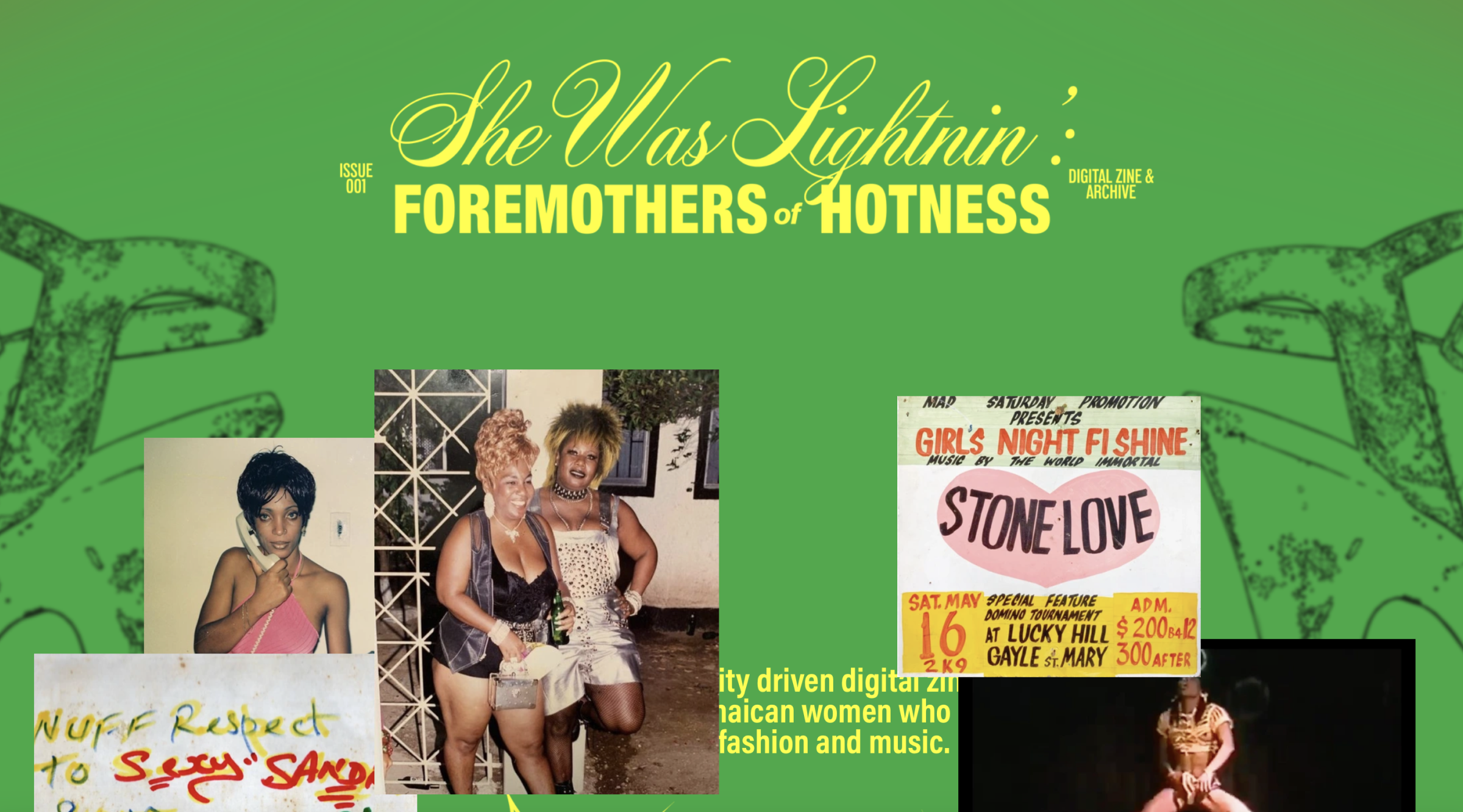
The fourth interview from the series of talks with ReadyLaunch grantees features Caprice Humphries—Black queer femme, digital designer, and cultural researcher passionate about design, photography, fashion, and contemporary art. In the interview, Caprice opens up about her way into design activism and speaks about the women in Jamaican dancehall culture she researches for the She Was Lightnin’ Zine and Archive—the online project carried out under the ReadyLaunch grant.
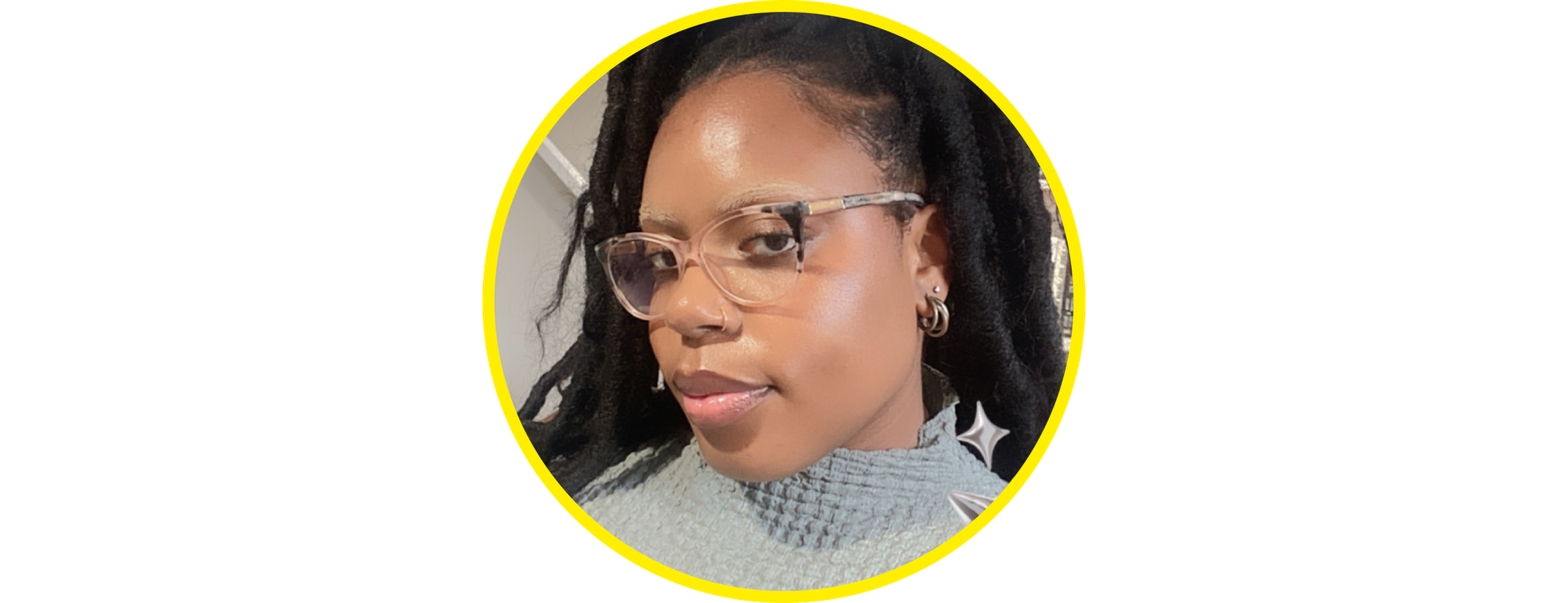
Commanding design to share stories
I’ve always prided myself on being creative. Still, there are very vivid points in my life where I noticed my creativity evolve from just a personal space for self-expression to a shared space for my community. When I was little, I used to rummage through my mom’s clothes drawer, get her old clothes, and cut and stitch them to make stuff for myself. I also spent a lot of time painting and drawing as a child.

Somewhere around college, I got into politics, which drew me away from art and more into studying International Relations and African American studies. Through these disciplines, I learned more true tellings of the Black history—stories that strayed far away from what we had learned from textbooks in school or on television. It was a painful awakening that encouraged me to rethink the career I wanted to create. Then, I found the work of Emory Douglas. I was so inspired by the way his art mobilized people and captured the radical stories of Black folk. All of this motivated me to learn graphic design.

In 2020, during quarantine, I taught myself all the Adobe applications and decided to go to grad school to study Media Studies and Fashion. Through my studies, I realized how important it was for me as a Black queer designer to use my skills to create work that incites liberation through curiosity and connection and shows the breadth and beauty of Black and Brown lived experiences.
For the past five years, I’ve been exploring the ways that digital spaces—websites, digital design, and social media—serve as an unmediated playground for worldmaking. This led me to create She Was Lightnin’ Zine and Archive of the Women in Dancehall.
Reflecting on the most important cultural phenomena for the Caribbean countries
I’ve always had a deep love and affinity for the Caribbean people and their culture, as they were always around me when I was growing up. I recognized similarities between their cultures and Black American culture in the way that both cultures use fashion, dance, and music as vehicles for liberation and self-expression. I wanted to shine a light on Jamaican culture and Dancehall and eventually see how Black American and Caribbean cultures interact. When I got into my Media Studies program, I chose to explore the relationship between women, fashion, and Dancehall culture for my thesis project.
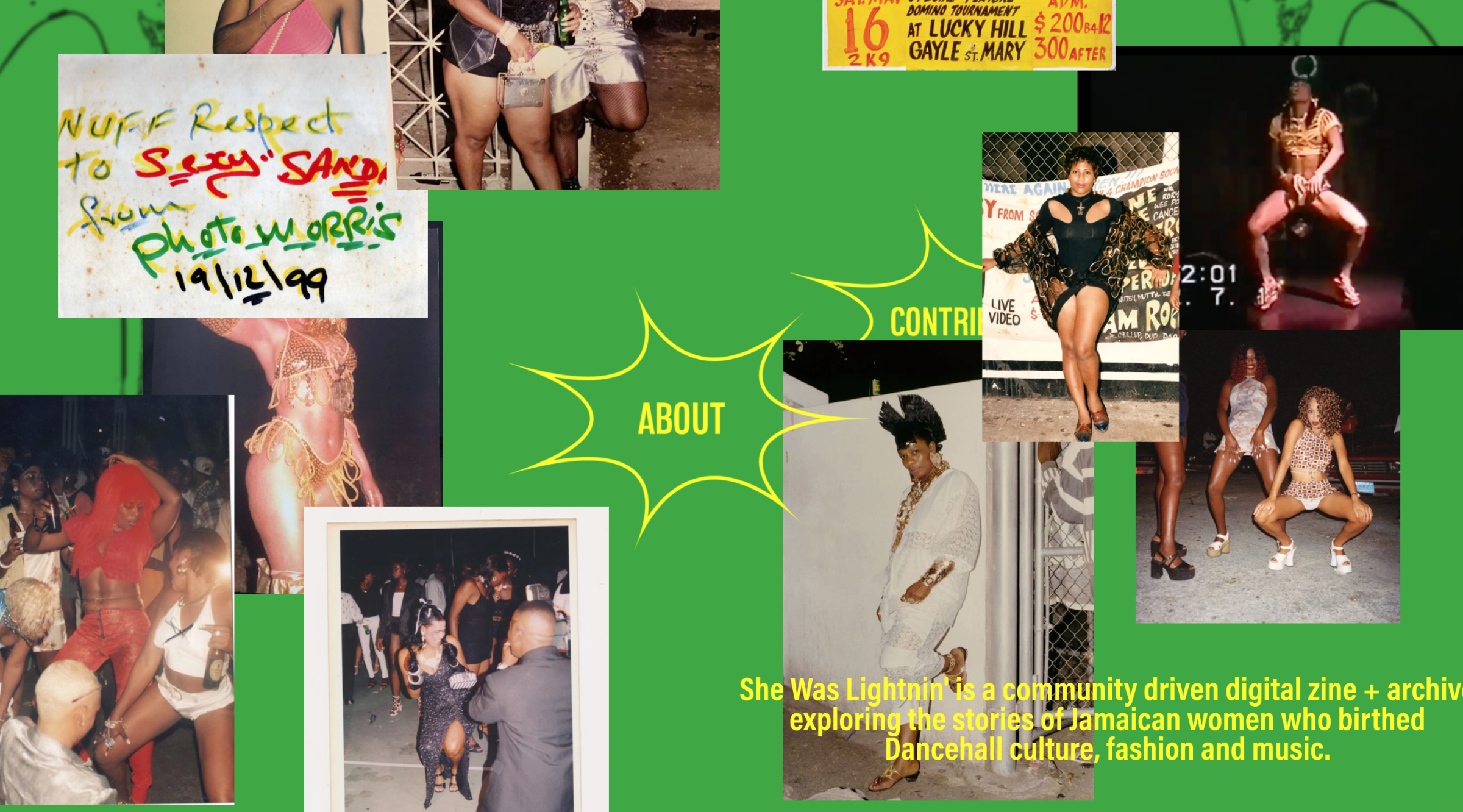
While doing research for the thesis, I found the work from a project called No Gyal Can Test by Akeem Smith. I still think that my project kind of started with this work. Smith conducted a 12-year research project and acquired many photos of matriarchs of Dancehall culture, which he used to create his own art installation. He highlighted the ingenuity, creativity, and sexual prowess of the women in dancehall as a way to subvert the male-dominant culture. He stressed that women started clubs at the dancehall parties and initiated competitions where people would come dressed in full looks. I wanted my zine to be in conversation with that project—it inspired me to take my findings a little bit further.
Going broader in the research with the Readylaunch Grant
She Was Lightnin’ is the first live website I put out with Readymag. Before the grant, it existed as a thesis project with a few slideshows that I presented to my professors. After my master’s was done, I stopped the research because I didn’t think it would lead anywhere. One day, a friend of mine sent me the link to the reel about the ReadyLauch grant and suggested that I apply.
The fact that I got the grant made me realize that my passion topic needs to be brought out to my community. This felt important. I initially wanted to use the grant to pay for books and a coding class and to compensate people who contributed to the zine. However, in the middle of designing the website, my computer literally combusted, so I used the majority of the money to buy books and other things and the rest—to get a new computer.
When I applied for the ReadyLaunch grant, I thought my virtual zine was almost 100% ready, but once I started digging further, I realized there was so much more to learn about these women and the culture overall. The grant inspired me to do more and incubate my pieces of work, and now the website looks so much better and fuller. My research is starting to go in a different direction from where it was.
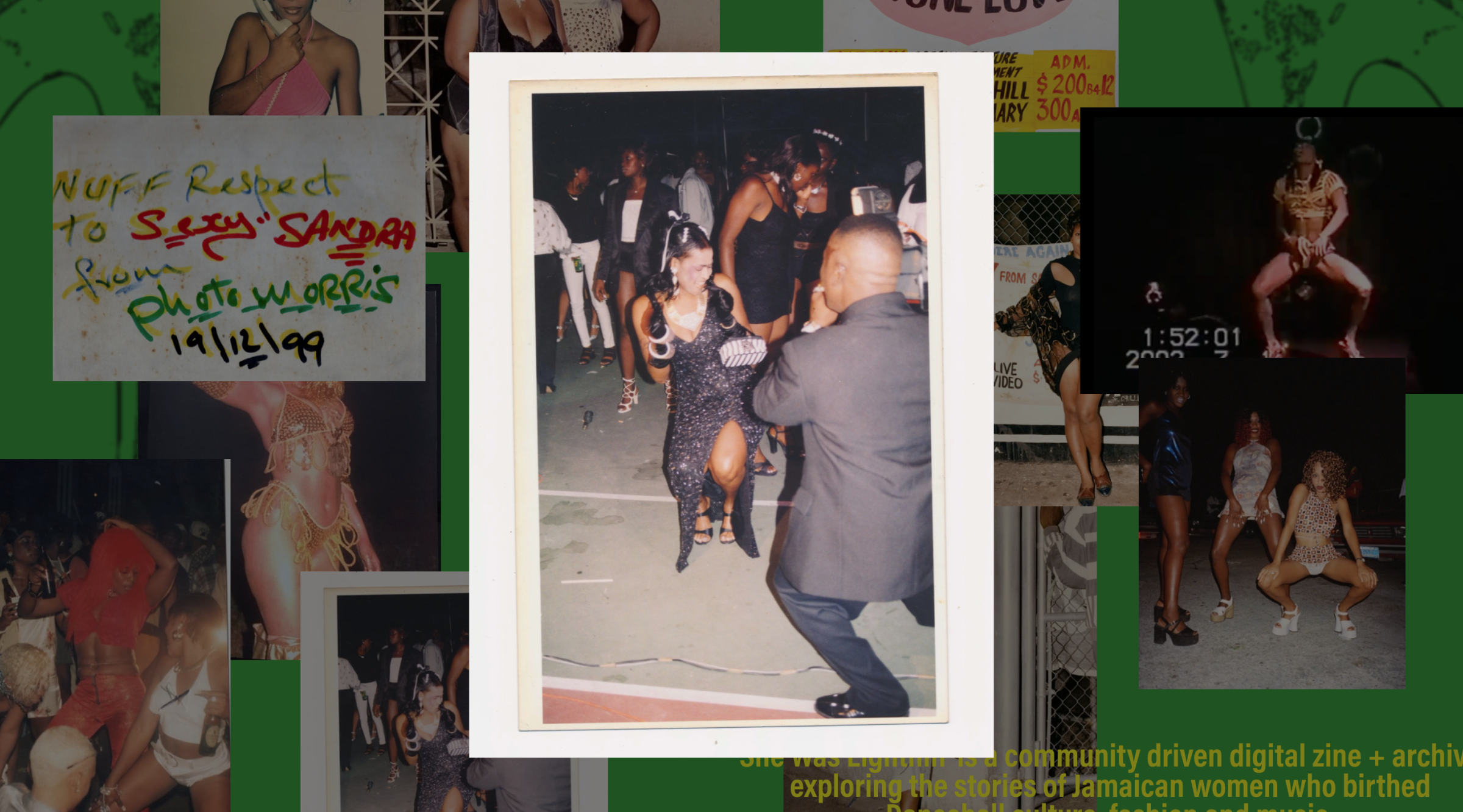
I did most of the research on my own, but now I’m turning a lot to my community. I started to have conversations with my Jamaican friends and other Dancehall researchers to get more information about the culture and its impact. I can already see how their contribution broadens the story I’m trying to tell.
Fostering community through cultural exploration and love
I want two things for the She Was Lightnin’ project. First, I hope people will learn more about Dancehall, about how multidimensional this subculture is, and how vital these women were to popular culture and the global economy.
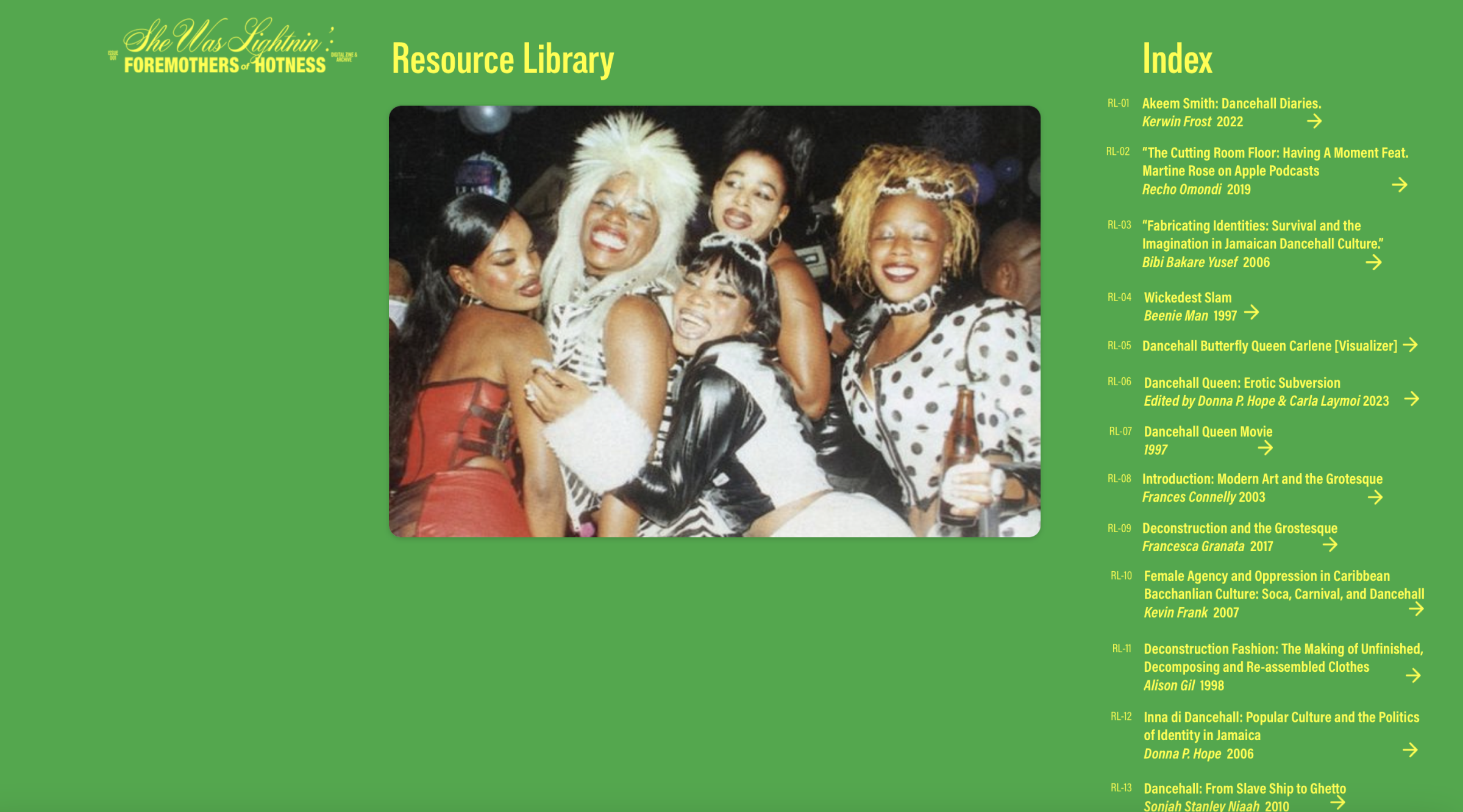
Caribbean blood doesn’t run through my body, but many of my caretakers, family members, lovers, and dear friends are strong, proud, beautiful, and skillful Caribbean women. They constantly show me what confidence, compassion, and ambition are. Women involved in Dancehall culture were also so proud of who they were and adamant about setting their own beauty and social standards. So, the second thing, I hope that this archive project inspires the same qualities in the Black women and girls throughout the diaspora and other people who view and interact with the zine. That might be the biggest thing I want them to walk away with.
I wanted to center Was Lightnin’ around love and empathy because I think the more you understand a people and their culture, the closer you’ll feel to them and, subsequently, to yourself. Hopefully, exploring the world and bonding with others will eventually squash all the hate and anguish we’re experiencing globally right now.
She Was Lightnin’ Digital Zine and Archive will be released at the beginning of 2025 with the help of the ReadyLaunch grant from Readymag. Learn more about how you might contribute to the story.